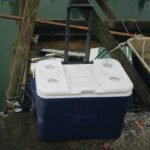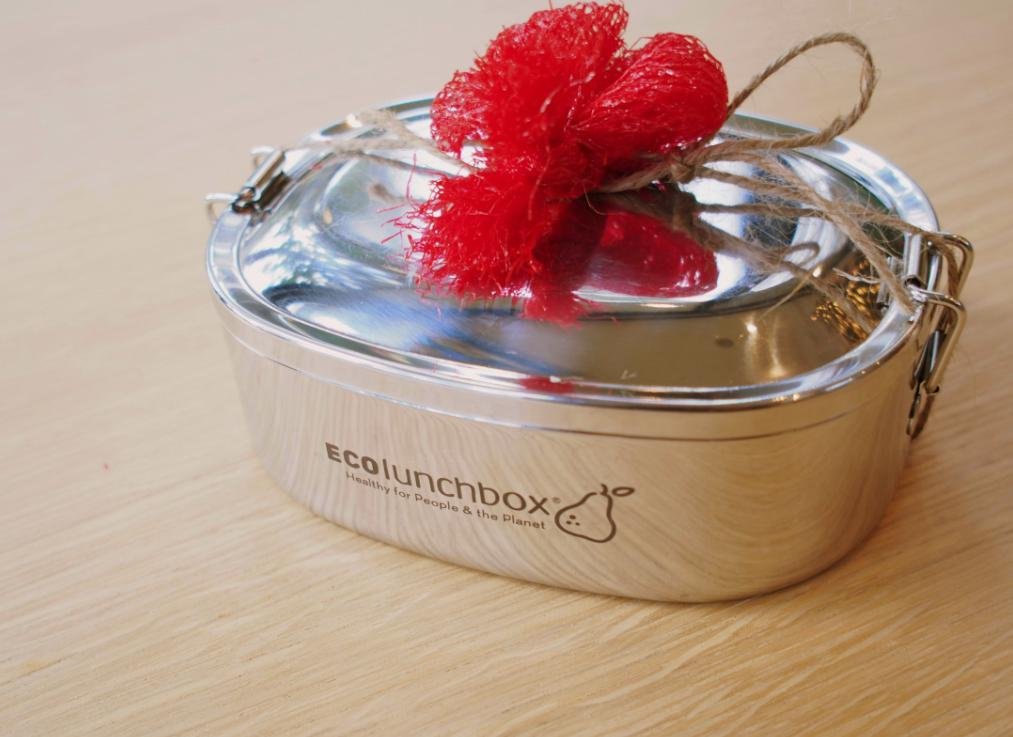Introduction to Lunch Bag Hygiene
Maintaining proper hygiene in lunch bags is crucial for ensuring the safety and freshness of the food packed within. Lunch bags often serve as frequent carriers of meals, snacks, and beverages, inherently making them susceptible to accumulating food residues, spills, and bacteria over time. This accumulation can lead to the development of unpleasant odors as well as hazardous microbial growth. Regular cleaning and proper maintenance of lunch bags not only protect the health of the users but also prolong the longevity of the bags themselves.
Unclean lunch bags can host a variety of harmful bacteria that may result from leftover food particles or spills. These microorganisms can thrive in warm, damp environments, making a used lunch bag an ideal breeding ground. When food is stored in such contaminated bags, it poses significant health risks, including foodborne illnesses. To mitigate these risks, routine cleaning and sanitizing of lunch bags should become an integral part of one’s packing routine.
Moreover, the materials commonly used for lunch bags, whether they are insulated or non-insulated fabric, require specific cleaning methods to maintain their integrity. Often, lunch bags are designed to resist stains and odors, but neglecting to clean them can lead to irreversible damage and an unappealing appearance. By investing time in the regular care of a lunch bag, users not only safeguard their health but also preserve the aesthetics of their chosen container for years to come.
In essence, understanding the significance of lunch bag hygiene is foundational for anyone who relies on these handy containers for daily meals. Implementing effective cleaning practices ultimately enhances the overall experience of using lunch bags while ensuring the freshness of the foods stored within.
Types of Lunch Bags and Their Care Requirements
When it comes to lunch bags, there are several types available in the market, each designed to cater to different needs and preferences. Understanding the nuances of each type can significantly enhance their longevity and maintenance. The most common types include soft-sided, insulated, and hard-shell lunch bags, each with distinct cleaning requirements.
Soft-sided lunch bags, often constructed from fabric or nylon, are lightweight and easy to store. As they are typically machine washable, it is advisable to check the manufacturer’s label before proceeding. A gentle cycle with cold water is often sufficient, with air drying recommended to maintain their shape. Spot cleaning with a damp cloth can also be effective for minor stains, which helps to prevent any buildup of odors or residues.
Insulated lunch bags are designed to keep food at the right temperature, whether hot or cold. They are generally lined with materials that can be wiped clean, making them practical for daily use. To maintain freshness, it is essential to regularly clean both the interior and exterior surfaces. Using mild soap and water for the interior is recommended, while the exterior can benefit from occasional machine washing if allowed by the product guidelines. Always ensure the bag is fully dried before packing it again.
Hard-shell containers provide robust protection for meals and are often made from plastic or silicone. While they are typically resistant to stains and odors, regular cleaning is crucial. These containers can usually be cleaned in a dishwasher; however, handwashing with warm soapy water is a safe alternative, particularly for intricate designs or seals. Checking for and addressing any cracks or damage can help maintain functionality, ensuring your hard-shell container serves its purpose effectively.
By understanding the various types of lunch bags and their care requirements, users can make informed decisions about cleaning and maintenance, ultimately contributing to the longevity and hygiene of their lunch containers.
Essential Supplies for Cleaning Lunch Bags
Keeping lunch bags clean is crucial to ensuring food safety and maintaining freshness. To effectively clean your lunch bags, there are several essential supplies that you will need. Each item serves a specific purpose, contributing to a thorough cleaning process.
First, mild soap is an essential supply for cleaning lunch bags. Choose a soap that is free of harsh chemicals, as this will help prevent any residual scents that could transfer to your food. A mixture of warm water and mild soap can be used to wipe down both exterior and interior surfaces, ensuring that you eliminate stains and residues effectively.
Next, consider using sanitizing wipes. These are particularly useful for quick clean-ups and for areas that may require extra disinfection, such as zippers and compartments that come into contact with food. By using sanitizing wipes regularly, you can minimize the buildup of bacteria and germs, promoting a healthier meal experience.
Baking soda is another valuable supply worth having on hand. It can be used as a gentle abrasive cleaner and is effective at neutralizing odors. To use baking soda, simply mix it with water to create a paste and apply it to any particularly stubborn stains or areas with an unpleasant smell. Let it sit for a few minutes before rinsing thoroughly with water.
Lastly, a good dish brush or sponge is essential for scrubbing both hard-to-reach areas and the lunch bag’s surface. A brush with soft bristles can help remove debris without damaging the fabric. Make sure to clean your cleaning tools regularly to maintain their effectiveness.
By gathering these essential supplies—mild soap, sanitizing wipes, baking soda, and dish brushes—you can ensure a comprehensive cleaning process that upholds the freshness and hygiene of your lunch bags.
Step-by-Step Cleaning Process for Lunch Bags
Maintaining the freshness of lunch bags is crucial for hygiene and food safety. To effectively clean lunch bags, follow this structured step-by-step guide, which outlines both hand-washing and machine-washing methods.
Begin by disassembling the lunch bag. Remove any detachable components, such as straps, containers, or ice packs. This ensures that every part of the bag can be cleaned thoroughly. Check for any visible food residues or items that may have been accidentally left in the bag. It’s important to empty all compartments to avoid unsanitary conditions.
For hand-washing, prepare a solution of warm water and mild detergent in a basin. Use a soft cloth or sponge to immerse in the soapy water and gently scrub both the interior and exterior surfaces of the lunch bag. Pay special attention to any stained areas; a paste made of baking soda and water can be applied to stubborn stains and left to sit for ten minutes before scrubbing. Rinse the bag with clean water to remove any soap residue.
For machine-washing, ensure that the lunch bag is machine-safe by checking the care label. Most fabric lunch bags can be washed on a gentle cycle using cold water and a mild detergent. Place the bag inside a mesh laundry bag to protect it during the wash cycle. Consider adding towels to balance the load and minimize agitation. Once washed, air dry the bag completely, avoiding direct sunlight which may cause fading.
After cleaning, inspect the lunch bag thoroughly for any lingering odors or stains. If odors persist, consider using vinegar diluted in water for an additional cleansing rinse. Ensuring that lunch bags are cleaned regularly not only prolongs their lifespan but also guarantees a safe and pleasant experience for meal preparation.
Deodorizing Tips for Lunch Bags
Maintaining a fresh and odor-free lunch bag is essential not only for hygiene but also for ensuring that your meals retain their intended flavors. Over time, lunch bags can accumulate unpleasant smells due to food spills or storage of odorous items. Fortunately, several effective deodorizing methods can help eliminate these odors while also preventing future build-up.
One of the simplest and most effective methods for deodorizing a lunch bag is the use of baking soda. This natural agent is renowned for its ability to absorb odors. To utilize baking soda, sprinkle a small amount inside the lunch bag and let it sit for several hours or overnight. Afterward, simply shake it out or vacuum it. This process can be repeated periodically to keep the bag smelling fresh.
Activated charcoal is another excellent option for odor elimination. It works similarly to baking soda by absorbing smells and moisture. Place a few pieces of activated charcoal in a small breathable pouch and leave it inside the lunch bag. This method is particularly effective for persistent odors and can last for weeks before needing replacement.
Vinegar is also a potent ally in the battle against lunch bag odors due to its acidic properties that neutralize unpleasant smells. To use vinegar, mix equal parts of water and white vinegar in a spray bottle, lightly mist the interior of the bag, and wipe it down with a clean cloth. Allow the bag to air dry completely, and the vinegar smell will dissipate, taking lingering odors with it.
To prevent odors from developing in the first place, always ensure that food containers are tightly sealed and free from leaks. Regular cleaning of the lunch bag, ideally after each use, will also help maintain freshness. Additionally, consider using reusable ice packs, as they can help keep food at safe temperatures, thereby reducing the chances of bacterial growth that can lead to unpleasant odors.
Drying and Storing Your Clean Lunch Bag
After thoroughly cleaning your lunch bag, it is vital to dry it properly to ensure maximum freshness and prevent any mildew or odors. Air drying is the preferred method for drying lunch bags. Placing the cleaned bag in a well-ventilated area allows moisture to evaporate gradually, preserving the integrity of the materials and any insulation. Avoid using a dryer, as the high heat can deform your lunch bag or damage any protective layers. It is recommended to hang the bag or lay it flat on a clean surface, ensuring all compartments are open to facilitate airflow.
In addition to air drying, consider the environment where you choose to dry your bag. A sunny spot can help expedite the drying process; however, be cautious about prolonged exposure to sunlight, as it may fade colors or damage certain materials over time. Ensure the bag is completely dry before attempting to store it, as any residual moisture can lead to unpleasant smells or mold growth, which compromises freshness.
Once your lunch bag is dry, proper storage is essential for maintaining its cleanliness and readiness for future use. Store the bag in a cool, dry place, away from direct sunlight and moisture. Ideally, use a dedicated space, such as a kitchen cabinet or pantry, to keep it free from dust and contaminants. If the bag has multiple sections or compartments, keep them open during storage to allow for air circulation, preventing any musty odors from developing.
Regularly check your stored lunch bag for signs of wear or moisture, particularly if it has not been used for some time. By following these tips for drying and storing your clean lunch bag, you will help ensure that it remains fresh and ready for your next meal on the go.
Maintenance Tips to Keep Lunch Bags Clean Longer
Regular maintenance is essential to ensure the longevity and cleanliness of your lunch bags. By implementing proactive measures, you can significantly reduce the frequency of deep cleanings, thereby prolonging the life of your lunch bags. One of the most effective strategies is to use liners. These can be easily removed and washed, protecting the interior of the bag from food spills and stains. Additionally, consider using reusable silicone or fabric liners, which are both eco-friendly and machine washable, further simplifying your cleaning efforts.
Another crucial tip is to be mindful of the types of food packed in your lunch. Certain items, particularly greasy or saucy foods, are prone to causing stains and residual odors. When possible, opt for dry or less messy alternatives, such as sandwiches, fruits, and vegetables. This approach not only helps keep your lunch bag cleaner but also contributes to a more enjoyable lunchtime experience.
Routine inspections of your lunch bag can also aid in its upkeep. Regular checks for signs of wear and tear, such as frayed seams or damaged insulation, allow you to address potential issues before they worsen. If you notice any deterioration, it is advisable to repair or replace the bag promptly. Furthermore, after each use, take a moment to empty the bag completely and wipe down any surfaces to prevent build-up over time.
Incorporating these maintenance tips into your routine will make a noticeable difference in keeping your lunch bag cleaner for longer. The use of liners, careful food selection, and routine inspections collectively work toward maintaining the freshness and usability of your lunch bags while ensuring a more pleasant experience for the user. By prioritizing these habits, you contribute to the overall cleanliness and extend the lifespan of your lunch bag investment.
Safe Storage of Lunch Bag Contents
Maintaining the safety and freshness of the contents in lunch bags is paramount to ensuring a healthy eating experience. Proper storage practices directly affect the overall hygiene of the food items, and employing effective strategies can significantly minimize the risk of contamination. A fundamental step in this process is selecting appropriate containers for food storage. Using airtight containers is advisable as they help prevent spills, limit exposure to external contaminants, and retain food freshness for longer periods. For hazardous or perishable items, refrigerating these containers before packing them into lunch bags can also enhance food safety.
Additionally, utilizing insulated lunch bags plays a crucial role in temperature control, helping maintain an optimal climate for food items that are sensitive to temperature fluctuations. It is essential to check the temperature regulations that food is subject to, especially when packing items such as dairy products, meats, and cut fruits. Following established food safety guidelines, such as keeping perishable items below 40°F (4°C), ensures that food remains safe to consume throughout the day.
Moreover, vigilance in handling lunch bag contents is necessary. It is important to avoid placing ready-to-eat foods in contact with raw items, such as meats or seafood, to eliminate cross-contamination risks. Properly washing hands before handling food also plays an essential role in enhancing cleanliness and food safety. The cleanliness of the lunch bag itself is equally important; regular washing, especially after spills or leaks, prevents bacterial growth and unpleasant odors.
By following these safe storage practices, individuals can effectively safeguard their lunch bag contents, ensuring both freshness and adherence to hygiene regulations. Prioritizing these measures leads to a more enjoyable dining experience, free from health concerns related to improperly stored food.
Conclusion: Stay Healthy with a Clean Lunch Bag
Maintaining the cleanliness of lunch bags is essential for promoting better hygiene and overall health. A clean lunch bag not only ensures that your meals remain fresh but also minimizes the risk of foodborne illnesses that can arise from bacteria buildup. It is important to remember that lunch bags are often exposed to various environments, making them susceptible to contamination. Regular cleaning practices can significantly aid in keeping these bags sanitized.
The blog post has provided several useful tips and tricks for effectively cleaning lunch bags. From using the right cleaning solutions to ensuring thorough drying, these simple yet effective steps can enhance the longevity and hygiene of your lunch bags. It is advisable to clean lunch bags after every use, especially if they have come into contact with perishable items. This preventive measure significantly contributes to maintaining a healthy eating environment.
Integrating these practices into your routine may seem minor, but they yield significant health benefits if consistently applied. Moreover, utilizing compartments and purpose-built lunch containers within the bag can further prevent cross-contamination, thus enhancing food safety. Consider adopting a schedule for more extensive cleaning, such as once a month, to address any overlooked areas, including zippers and pockets, that may harbor germs.
In conclusion, prioritizing the cleanliness of lunch bags not only manifests in better food quality but also assures the safety of meals, keeping you and your loved ones healthy. By following the guidelines set forth, you can maintain a clean lunch bag that supports a nourishing lifestyle. Establish a habit of regular cleaning, and enjoy peace of mind knowing that your meals are carried in a hygienic environment.






